The Passage of the Secrets, page 2
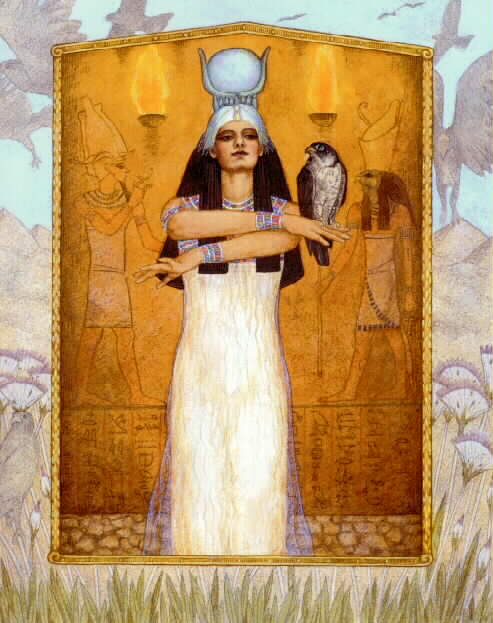
Here we will explore the Gods, ancient history, YHWH's people, the Kings and Pharaohs and the changes in religious history that made this all seem pagan. This is where it began and how it was kept intact. The "secrets", and the meaning it still represents were passed down through the ages, with alot of changes, to become part of the Masonic history that exists today. What you will also discover is that there are two sides to every story, the one the Bible tells and the one history, buried scrolls and ancient manuscripts tell. As we have discovered, this is NOT TAUGHT in any Lodge and is not meant to be. With your perfect mind, you must discover the real truth on your own.
Let's assume again that any 'immortal' or 'Watcher' spoken about
by Enoch here, is by Egyptian standards, called a God or Goddesses. They are the
not the Nephilim in the JKB. They have great powers and can
not become ill or be killed and die like mortals. Their appearance can
be like humans but they can also appear as a plant or animal or even a rock.
Sophia in the Nag Hammidi texts is considered one of the gods (God's wife) but
in Egypt her name was Isis. She is still considered God's wife.
The Watchers who are spoken of by Enoch are Gods Holy Angels
and are considered 'teachers' of mankind, but some turn away from God and
refuse to return to their home in Heaven. These mated with human women. Their
children are the Nephilim in the KJB.
On the previous page you found a snipit of information that indicates Enoch was taught the sciences by Sophia/Eve/Isis. "And the all-glorious One, Youel, anointed me again and she gave power to me."
‘Say, if thou knowest science: Who hath measured the Earth, that it be known? Who hath stretched a cord upon it?” So was Job asked when called upon to admit that God, not Man, was the ultimate Keeper of the Secrets. In the scene of the introduction of the king-priest to Shamash, the purpose or essence of the occurrence is indicated by two Divine Cordholders. The two cords they stretch to a ray-emitting planet form an angle, suggesting measurement not so much of distance as of orientation. An Egyptian depiction of a similar motif, a scene painted on the Papyrus of Queen Nejmet, shows how two cordholders measured an angle based on the planet called “Red Eye of Horus”
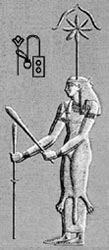 The stretching of cords to determine
the proper astronomical orientation of a temple
was the task of a goddess called Sesheta in Egypt. She was on the one hand a Goddess of
the Calendar; her epithets were “the great one, lady of letters, mistress of the House of
Books” and her symbol was the stylus made of a palm branch, which in Egyptian hieroglyphs
stood for “counting the years.” She was depicted with a seven-rayed star within the Heavenly
Bow on her head. She was the Goddess of Construction, but only (as pointed out by Sir
Norman Lockyer in The Dawn of Astronomy) for the purpose of determining the orientation
of temples. Such an orientation was not haphazard or a matter left to guesswork. The
Egyptians relied on divine guidance to determine the orientation and major axis of
their temples; the task was assigned to Sesheta. Auguste Mariette, reporting on his
finds at Denderah where depictions and inscriptions pertaining to Sesheta were discovered,
said it was she who “made certain that the construction of sacred shrines was carried out
exactly according to the directions contained in the Divine Books.”
The stretching of cords to determine
the proper astronomical orientation of a temple
was the task of a goddess called Sesheta in Egypt. She was on the one hand a Goddess of
the Calendar; her epithets were “the great one, lady of letters, mistress of the House of
Books” and her symbol was the stylus made of a palm branch, which in Egyptian hieroglyphs
stood for “counting the years.” She was depicted with a seven-rayed star within the Heavenly
Bow on her head. She was the Goddess of Construction, but only (as pointed out by Sir
Norman Lockyer in The Dawn of Astronomy) for the purpose of determining the orientation
of temples. Such an orientation was not haphazard or a matter left to guesswork. The
Egyptians relied on divine guidance to determine the orientation and major axis of
their temples; the task was assigned to Sesheta. Auguste Mariette, reporting on his
finds at Denderah where depictions and inscriptions pertaining to Sesheta were discovered,
said it was she who “made certain that the construction of sacred shrines was carried out
exactly according to the directions contained in the Divine Books.”
Her crooked measuring stick symbolised one year, or time in general. At its end was sometimes attached a frog and a cartouche meaning: thousands of (or infinite) years. She was also called "mistress of books" as the "patroness" of Egyptian bureaucrats. Her dress was of leopard's skin and on her head was an upstanding Persea tree with two hanging horns or sometimes plumes and a star. Other regalia were: a knotted stick and a staff.
To grant the king immortality, she recorded the name of the king of the leaves of the Tree of Life , which grew near where she lived. Also, she calculated the days of the king's earthly life and marked the number on the notched palm branch which she carried.
Determining the correct orientation called for an elaborate ceremony named
Put-ser, meaning “the stretching of the cord.” The goddess sank a pole in the
ground by hammering it down with a golden club; the king, guided by her, sank another
pole. A cord was then stretched between the two poles, indicating the proper
orientation; it was determined by the position of a specific star. A study by Z.
Zaba published by the Czechoslovak Academy of Sciences (Archiv Orientalni,
Supplement 2, 1953) concluded that the ceremony revealed knowledge of the
phenomenon of precession, and thus of the zodiacal division of the celestial circle.
The astral aspects of the ceremony have been made clear by relevant inscriptions, as
the one found on the walls of the temple of Horus in Edfu. It records the words
of the pharaoh:
I take the peg-pole,
I grasp the club by its handle,,
I stretch the cord with Sesheta.,
I turn my sight to follow the stars’ movements,,
I fix my gaze on the astrality of Msihettu.,
The star-god that announces the time,
reaches the angle of its Merkhet;,
I establish the four corners of the god’s temple.
Sesheta, also known as Isis, was, according to Egyptian theology, the female
companion and chief assistant of Thoth, the Egyptian god of sciences, mathematics,
and the calendar-the Divine Scribe, who kept the gods’ records, and the Keeper of the
Secrets of the construction of the pyramids.
As such, he was the foremost Divine Architect.
Sophia/Eve, the mother of mankind, is also known in Egyptian legend as Isis. This is because Isis is known as the most powerful goddess in history. Her name represents 'The Throne'. In the legend she is the Daughter of Nut and Geb. Sister of Osiris, Nephthys, and Seth. She was regarded as the feminine counterpart to Osiris, a role she probably occupied before the dawn of dynastic Egypt.
No other Egyptian deity has stood the test of time as well as Isis. Her cult was not extinguished with the other Egyptian gods, but was embraced by the Greeks and Romans, her worship has even lasted into the present day. She was revered by the Egyptian people as the great mother-goddess and represents the maternal spirit in its most intimate form. She is often seen suckling a young Horus. In the Osiris legend she is seen as a dutiful wife, a grieving widow and as a protector of the dead.
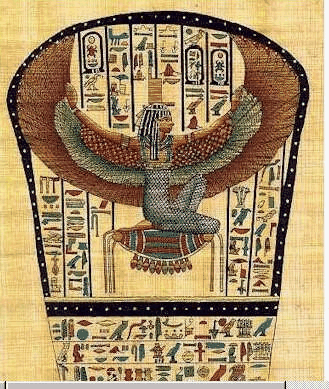 Isis was a great enchantress, the goddess of magic. Together
with Thoth, she taught mankind the secrets of medicine. She
was the embalmer and guardian of Osiris. She is often rendered
on the foot of coffins with long wings spread to protect the
deceased. It is noteworthy that she is one of only a few deities
that we find with wings in ancient Egyptian mythology.
Isis was a great enchantress, the goddess of magic. Together
with Thoth, she taught mankind the secrets of medicine. She
was the embalmer and guardian of Osiris. She is often rendered
on the foot of coffins with long wings spread to protect the
deceased. It is noteworthy that she is one of only a few deities
that we find with wings in ancient Egyptian mythology.
She is the teacher of secret things revealed to her by Ra/YAWH/God.
Isis, the All Goddess, speaks:
I am Nature, the Mother of All Mistress of the Elements,
Sovereign of the Spirit Queen of the Dead,
Queen of the Immortals, The single embodiment of all goddesses and gods.
My will governs the movements of the stars, The winds of the seas
And the dread silence of the underworld.
I am worshipped under many aspects, Known by countless names. I am Isis.
Her religion was a mystery cult in which she was revered as Queen of Heaven, Earth and the Underworld.
Although little is known of this religion, initiates reported powerful mystical experiences and were ensured of everlasting life by devotion to Isis. Isis assumed the characteristics of many lesser-known Goddesses, thus becoming worshipped as the universal Goddess who was all-encompassing in her feminine attributes and power: divinity itself. Isis' power is symbolized by the throne, the seat of all authority, wisdom and truth on earth and in heaven.
Isis, the "Lady of Life," is often depicted holding the Ankh, the symbol of eternal life. She is celebrated as a powerful and magical healer, being gifted with the ability to cure mind, body and spirit. Another of her titles is Divine Physician.
 In myth she seems more fierce than a mother goddess, quite
strongwilled and could lash out against attackers if need be.
She sometimes appears as the scorpion goddess
Serket and as the star Sopdet (Sirius, Gr: Sothis) she is
considered to bring on the inundation and the ancient Egyptians
called her the "Eye of Re", giving her an association with the
sun.
In myth she seems more fierce than a mother goddess, quite
strongwilled and could lash out against attackers if need be.
She sometimes appears as the scorpion goddess
Serket and as the star Sopdet (Sirius, Gr: Sothis) she is
considered to bring on the inundation and the ancient Egyptians
called her the "Eye of Re", giving her an association with the
sun.
She could be quite cunning and earned the epithet "Mistress
of Magic" as in myth she managed to trick Ra into telling her
his secret name, thus getting access to great knowledge. In
the
"Contendings of Horus and Set"
she uses all her magic and trickery to help her son regain the
throne of (Osiris) from Set. And in the most well known myth
about her it is told how she mourned and searched for her husband
Wesir (Osiris) who had been murdered by his brother Set, and
how she succeeded in giving him life and beget his son Horus.
This myth goes back to the early dynastic days and became
widely known in later Roman days.
"Isis, represented in the Song of Solomon by the dark maid
of Jerusalem, is symbolic of receptive nature - the watery,
maternal principle which creates all things out of herself after
impregnation has been achieved by the virility of the sun."
Manly P. Hall, Masonic, Hermetic, Quabbalistic & Rosicrucian
Symbolical Philosophy
Cyril, the Bishop of Alexandria, had openly embraced the
cause of Isis, the Egyptian goddess, and had anthropomorphized
her into Mary, the mother of God."
P. Blavatsky, Isis Unveiled
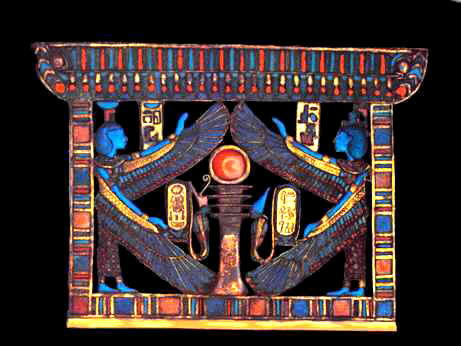 Isis; the very terms applied
afterwards to that personage (the Virgin Mary) who succeeded
to her form, titles, symbols, rites, and ceremonies....Thus,
her devotees carried into the new priesthood the former badges
of their profession, the obligation to celibacy, the tonsure,
and the surplice, omitting, unfortunately, the frequent
ablutions prescribed by the ancient creed." "The 'Black Virgins'
, so highly reverenced in certain French cathedrals - proved,
when at last critically examined - basalt figures of Isis!'
Isis; the very terms applied
afterwards to that personage (the Virgin Mary) who succeeded
to her form, titles, symbols, rites, and ceremonies....Thus,
her devotees carried into the new priesthood the former badges
of their profession, the obligation to celibacy, the tonsure,
and the surplice, omitting, unfortunately, the frequent
ablutions prescribed by the ancient creed." "The 'Black Virgins'
, so highly reverenced in certain French cathedrals - proved,
when at last critically examined - basalt figures of Isis!' King, The Gnostics and their Remains
The Templars, imprisoned and awaiting death in the Castle
of Chinon composed a prayer to Our Lady acknowledging Bernard
to be the founder of her religion. In addition to the numerous
hymns and sermons he addressed to her, he wrote about 280
sermons on the theme of the Song of Songs, the epithalamion of
Solomon and the Queen of Sheba, whose versicle 'I am black,
but I am beautiful, O ye daughters of Jerusalem' is the
recurring refrain of the Black Virgin cult.
Cult of the Black Virgin
What becomes apparent here is that only the Egyptian story is born of the truth, but it is reflected in many other ancient religions on earth. Many books talk about the hermetic school of Tuthmosis III of Egypt, who reigned about 1450 BC. But it is not generally known that the school he originally inherited was the Royal Court of the Dragon. This had been founded by the priests of Mendes in about 2200 BC and was subsequently ratified by the 12th dynasty Queen Sobeknefru who hence was called the Dragon Queen. The Dragon represents wisdom.
This sovereign and priestly Order passed from Egypt to the Kings of Jerusalem; to the Black Sea Princes of Scythia and into the Balkans - notably to the Royal House of Hungary, whose King Sigismund reconstituted the Court just 600 years ago. Today it exists as the Imperial and Royal Court of the Dragon Sovereignty, and after some 4,000 years it is the oldest sovereign Court in the world.
the Apocryphon of John in the Nag, The revelation of Adam`s origin and Origin of the world in the Nag, tells the rest of the story of creation. As you have discovered, it is a complicated and lengthy story but we must unravel it. Be advised that only the names have changed, the characters are the same.
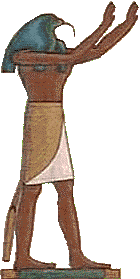 This is the Egyptian deity, Thoth, he represents the
highest attainment of knowledge and divine speech. The inventor of
spoken and written language. As the lord of books
he was the scribe of the gods and patron of all scribes. He was credited with
inventing astronomy, geometry, and medicine. He was the
measurer of the earth and counter of the stars, the keeper and recorder
of all knowledge. It was Thoth who was believed to have
written important religious texts such as The Book of the Dead. Thoth is also
associated with Hermes, which is a Greek word for Thoth.
In most pictures, Thoth appears in the Hall of Maat as a judge
holding a scale to the weigh the deceased's heart against the feather of
Maat. In the center of the scale is the Akah which is the symbol
of Eternal Life.
This is the Egyptian deity, Thoth, he represents the
highest attainment of knowledge and divine speech. The inventor of
spoken and written language. As the lord of books
he was the scribe of the gods and patron of all scribes. He was credited with
inventing astronomy, geometry, and medicine. He was the
measurer of the earth and counter of the stars, the keeper and recorder
of all knowledge. It was Thoth who was believed to have
written important religious texts such as The Book of the Dead. Thoth is also
associated with Hermes, which is a Greek word for Thoth.
In most pictures, Thoth appears in the Hall of Maat as a judge
holding a scale to the weigh the deceased's heart against the feather of
Maat. In the center of the scale is the Akah which is the symbol
of Eternal Life.
The hall of Maat is also the Hall of Justice in Heaven. If you have read Sylvia Brown's Book, Life on The Other Side, you saw that souls were transported to the Hall of Justice when they arrived in Heaven.
Thoth is said to have written the Emerald Tablet. There are tantalizing bits of evidence that suggest mysterious visitors came to Egypt over 12,000 years ago and brought with them a powerful spiritual technology, which they passed down to future generations in a time capsule of wisdom that became known as the Emerald Tablet. The origins of the Emerald Tablet comes from the many legends that cloud its history. In one of the earliest of these fabled scenarios, Hermes is described as a son of Adam and wrote the tablet to show mankind how to redeem itself from his father's sins in the Garden of Eden. Until relatively recently, no one had a clear picture of either the authorship or the context of the mysterious writings ascribed to Hermes. Descriptions such as the one above are really no more than a summary of the ideal laid down in the "Hermetic" writings. The early Christian Fathers, in time, mostly held that Hermes was a great sage who lived before Moses and that he was a pious and wise man who received revelations from God that were later fully explained by Christianity. None mentioned that he was a Greek god. No one connected him with Enoch.
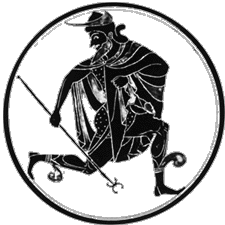 This is a portrail of Hermes, the Greek God.
Often taken to be Satan and described as such by religious groups
as they use this image to discredit freemasons and what they stand for.
Hermetic philosophy has nothing to do with Satan. Hermes Trismegistus
was considered to be a contemporary of Moses.
This is a portrail of Hermes, the Greek God.
Often taken to be Satan and described as such by religious groups
as they use this image to discredit freemasons and what they stand for.
Hermetic philosophy has nothing to do with Satan. Hermes Trismegistus
was considered to be a contemporary of Moses.
"Hermes, the Greek Thoth/Tehuti...is referred to as 'the
master of wisdom and teacher of mankind'. The Trismegistus tells
us that Thoth 'ordained measure, number and order in the
universe; was master architect (hence Hermetic masonry), and
his wife or consort was Nehemaut, known to the Gnostics as Sophia
and as Ma'at to the Egyptians. His symbol was the white feather.
.."
"According to the Hermes Trismegistus there were three grades
in the Egyptian mysteries of Thoth:
"Mortals. Those who were instructed but who had not yet gained
inner vision.
"Intelligences. Those whose vision enabled them to tune into
other life forms within the universe.
"Beings of light. Those who had become one with the light."
Jewish mystics identify the Emerald tablet's author with Seth, who was the third son of Adam. The Hindu sacred book Mahanirvanatantra states that Hermes was the same person as Buddha. The tablet found a home not only in the pagan tradition but also in all three of the orthodox Abrahamic religions (Judaism, Christianity, and Islam), and many of the most heretical beliefs of the Gnostics are also openly expressed in it. For over three centuries, the tablets were thought by the Catholic Church to be very ancient and held in the highest esteem. Something changed that belief.

This is Ra . He was called the father of the Gods.
He is the same as the Sumerian Markuk. From very early
times Ra was a sun god. He took many of the
attributes and even the names of other gods as Egyptian myths
evolved. He is pictured here as a hawk or as a hawk headed man with a
solar disk encircled by a uracus on his head. The uracus is
a serpent which symbolizes wisdom. He was often pictured wearing the double
headed crown of upper and lower Egypt. Notice the Akah
in his hand, the symbol of Eternal Life.
At least a 1,000 years before Egypt was unified a new group of people entered Egypt called the Followers of Horus. Whether from southern Africa, the Sahara or from the Red Sea area we don't know, but they settled in Upper Egypt and opposed the Followers of Set in the Delta. Eventually the Followers of Horus united Egypt and their king, Narmer or Menes who became the first king of Dynastic Egypt, and the Horus name of the king started being used.
Who was Horus the Hawk or Falcon God? We are especially blessed since the Temple of Horus at Edfu is the best preserved temple in ancient Egypt, and on its walls contains such things as the different forms and powers of Horus, the names of the books in the Temple library, many rituals, hymns, and parts of the types of initiations. First and foremost, perhaps, Horus was a sky god, whose right eye was the Sun and whose left eye was the Moon, and where we came up with the concept of the right side being solar, the left, lunar. Associated with the hawk soaring over the land, and his eyes being the Sun and Moon, came his attributes as "All-Seeing, All-Knowing", yet not interfering unless he chooses to, or is summoned (like a Master of Falcons summons his Hawk or Falcon). Probably associated with the idea of a Falconer being protected by his birds, Horus is one of the most popular gods of Protection.
Horus was also the patron god of martial arts, and a couple of his temples, and their colleges taught military warfare, strategy, tactics, and all sorts of fighting, the officer corps or military west point of ancient Egypt, this is one of Egypt's traditions. Another tradition in which Horus figures prominently is Alchemy. Ptah, Horus, and Thoth were the leaders in the Egyptian school of Alchemy. Although Horus, during the New Kingdom and later was especially popular as the Son of Isis, remember that that designation is only one of his many forms.
THE 'PTAH' OF THE CRAFTSMEN IN ANCIENT EGYPT
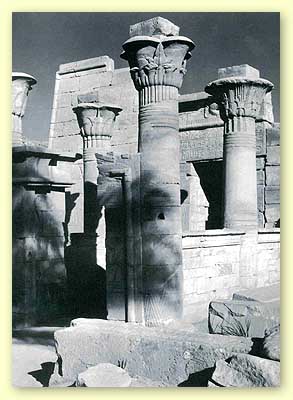 Ptah is a god that came before Ra. The Sumerian texts identify him with Enki.
The hieroglyphs that represent his name include the meanings "to open."
Ptah is the father of Atum or Marduk, who later became
the sun-god Ra. The Egyptians believed that Ra
originated thoughts. Then the god of intelligence, Thoth, gives words
to Ra's thoughts. But it is Ptah who gives these thoughts form.
Ptah's chief attribute is his power to give form to everything, and he was called
the Architect of the Universe. He shapes the gods, the cities, the
nomes, or provinces, of Egypt, and all things of beauty.
Ptah is a creative force even in death, for he shapes new bodies
for the souls of the deceased to inhabit in the Duat (Underworld).
Ptah is thought to have existed at the beginning of time within Nu, (Anu)
the primeval watery chaos, and Ptah created the world from that chaos either
by kneading mud or through speech.
Ptah is a god that came before Ra. The Sumerian texts identify him with Enki.
The hieroglyphs that represent his name include the meanings "to open."
Ptah is the father of Atum or Marduk, who later became
the sun-god Ra. The Egyptians believed that Ra
originated thoughts. Then the god of intelligence, Thoth, gives words
to Ra's thoughts. But it is Ptah who gives these thoughts form.
Ptah's chief attribute is his power to give form to everything, and he was called
the Architect of the Universe. He shapes the gods, the cities, the
nomes, or provinces, of Egypt, and all things of beauty.
Ptah is a creative force even in death, for he shapes new bodies
for the souls of the deceased to inhabit in the Duat (Underworld).
Ptah is thought to have existed at the beginning of time within Nu, (Anu)
the primeval watery chaos, and Ptah created the world from that chaos either
by kneading mud or through speech.
The graphic links to more information on Ptah. Path is also connected to The Hermetic Order
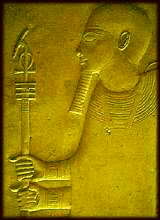 One of the traditions in ancient Egypt was that of the artists and craftsmen.
All of the best artists and craftsmen were trained in one place, the Temple of Ptah in
Memphis (presently 20 min south of Cairo). All other artists and craftsmen were
usually trained at the Temple or by people who were trained there. These artists
and craftsmen include: Architects, draftsmen, stone workers (large stones
and small), jewelers, painters, eventually glass workers, dyers, (but not weavers,
who studied at the Temple of Neith in the Delta).
One of the traditions in ancient Egypt was that of the artists and craftsmen.
All of the best artists and craftsmen were trained in one place, the Temple of Ptah in
Memphis (presently 20 min south of Cairo). All other artists and craftsmen were
usually trained at the Temple or by people who were trained there. These artists
and craftsmen include: Architects, draftsmen, stone workers (large stones
and small), jewelers, painters, eventually glass workers, dyers, (but not weavers,
who studied at the Temple of Neith in the Delta).
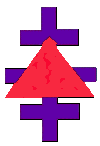 The object in the hand of
Ptah is called a 'scimitar'. Notice the triple tau resemblance.
Many people do not realize that in reality there were in fact 'other gods' who
had different functions in the heavenly relm.
The Egyptians identified each and every one. They are separate from the 'Creator',
who is identified here as Ptah. All of the Ancient
writings, world wide, prove this to be true. The scenario we investigate
here and have explored are the functions of some of these 'other gods'
who are called by different names and we have tried to connect
them with the Hebrew story, which began in Egypt. Something the traditional KJ bible
leaves out, because there is only one God recognized as
Architect of the Universe, creator of all.
The object in the hand of
Ptah is called a 'scimitar'. Notice the triple tau resemblance.
Many people do not realize that in reality there were in fact 'other gods' who
had different functions in the heavenly relm.
The Egyptians identified each and every one. They are separate from the 'Creator',
who is identified here as Ptah. All of the Ancient
writings, world wide, prove this to be true. The scenario we investigate
here and have explored are the functions of some of these 'other gods'
who are called by different names and we have tried to connect
them with the Hebrew story, which began in Egypt. Something the traditional KJ bible
leaves out, because there is only one God recognized as
Architect of the Universe, creator of all.
Ptah had other powers and attributes than just artists and craftsmen (he was one of the Great Creator Gods), and was married to Sekhmet (who was into other traditions including healing). She is called Ninharsag in the Sumerian texts. Ptah is also associated with the Science and Art of Alchemy. Their offspring is Nefertum, the God of perfumes and aromatherapy, and of the Lotus. Ptah is one of the few gods who ever since predynastic periods, was always portrayed as a human. We feel this is because he loved them. more.. see Sacred Texts
Speeking of Architects: In the Sumerian texts Gudea devoted many lines in his inscriptions to the subject of the bricks. It was a ceremony attended by several and was held on the grounds of the old temple. Gudea prepared himself by spending the night in the sanctuary then bathing clean and putting on special clothes in the morning. Throughout the land it was a solemn rest day Gudea offered sacrifices, then went into the old Holy Holies; there was the brick mold that the god had shown him in the vision-dream and a “holy carrying-basket.” Gudea put the basket on his head. A god named Galalim led the procession. The god Ningishzidda held the brick-mold in his hand. This god has been connected with Thoth.
 He let Gudea pour into the mold water from
the temple’s copper cup, as a good omen.
On a signal from Ninurta, Gudea poured clay into the mold, all the while uttering
incantations. Reverently, the inscription says, he carried out the holy rites. The
whole city of Lagash “was lying low,” waiting for the outcome: will the brick come
out right or will it be faulty?
He let Gudea pour into the mold water from
the temple’s copper cup, as a good omen.
On a signal from Ninurta, Gudea poured clay into the mold, all the while uttering
incantations. Reverently, the inscription says, he carried out the holy rites. The
whole city of Lagash “was lying low,” waiting for the outcome: will the brick come
out right or will it be faulty?
After the sun had shone upon the mold Gudea broke the mold,
he separated the brick. The bottom face of the stamped clay he saw; with a faithful
eye he examined it.
The brick was perfect!
He carried the brick to the temple, the brick raised from the mold. Like a brilliant
diadem he raised it to heaven; he carried it to the people and raised it. He put the brick down
in the temple; it was solid and firm.
And the heart of the king was made as bright as the day.
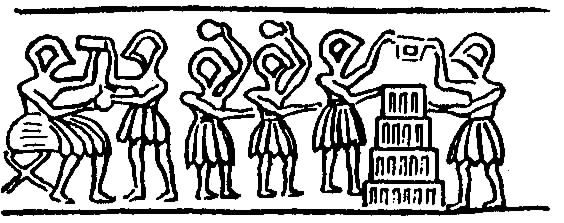 Ancient, even archaic, Sumerian depictions have been found dealing with the
brick ceremony; one of them shows a seated deity holding up the Holy Mold,
bricks from which are carried to construct a ziggurat.
Ancient, even archaic, Sumerian depictions have been found dealing with the
brick ceremony; one of them shows a seated deity holding up the Holy Mold,
bricks from which are carried to construct a ziggurat.
The time has thus come to start building the temple; and his first step was to mark out its orientation and implant the foundation stone. Gudea wrote that a new place was chosen for the new Eninnu, and archaeologists have indeed found its remains on a hill about fifteen hundred feet away from the earlier one.
We know from these remains that the ziggurat was built so that its corners would be oriented to the cardinal points; the precise orientation was obtained by first determining true east, then running one or more walls at right angles to each other. This ceremony too was done on an auspicious day for which “the full year” had to come to pass. The day was announced by the goddess Nanshe: “Nanshe, a child of Eridu” (the city of Enki) “commanded the fulfillment of the ascertained oracle.” It is our guess that it was the Day of the Equinox.
At midday, “when the Sun came fully forth,” the “Lord of the Observers, a Master Builder, stationed at the temple, the direction carefully planned.” As the Anunnaki were watching the procedure of determining the orientation “with much admiration,” he “laid the foundation stone and marked in the earth the wall’s direction. ” We read later on in the inscription that this Lord of the Observers, the Master Builder, was Ningishzidda; and we know from various depictions that it was a deity (recognized by his horned cap) who implanted the conical cornerstone on such occasions.
Apart from depictions of the ceremony, showing a god with the horned headdress implanting the conical “stone,” such representations cast in bronze suggest that the “stone” was actually a bronze one; the use of the term “stone” is not unusual, since all metals resulting from quarrying and mining were named with the prefix NA, meaning “stone” or “that which is mined.” In this regard it is noteworthy that in the Bible the laying of the corner or First Stone was also considered a divine or divinely inspired act signifying the Lord’s blessing to the new House.
In the prophecy by Zechariah about the rebuilding of the Temple in Jerusalem, he relates how Yahweh showed him in a vision “a man holding a measuring cord in his hand,” and how he was told that this divine emissary would come to measure the four sides of a rebuilt and greater Jerusalem with its new Lord’s House, whose stones shall rise sevenfold after the Lord will place for him the First Stone. “And when they shall see the bronze stone in the hands of Zerubbabel” (the one chosen by Yahweh to rebuild the Temple) all nations will know that it was the Lord’s will. On that occasion too the men chosen to carry out the temple’s rebuilding were named by Yahweh.
In Lagash, once the cornerstone was embedded by the god Ningishzidda,(Thoth) Gudea was able to lay the temple’s foundations, by now “like Nisaba knowing the meaning of numbers.”
The ziggurat built by Gudea, scholars have concluded, was one of seven
stages. Accordingly, seven blessings were pronounced as soon as the laying of
the foundation stone was completed and the temple’s orientation set and Gudea
began to place the bricks along the marking on the ground:
When Time Began -Zecharia Sitchin
All the architects and draftsmen who produced all of the pyramids, temples, palaces, royal tombs, and even forts were trained in Memphis. Have you noticed how all the men and women in paintings and statues have a similar body? Unlike the Greeks, who wanted to show how a persons body really looked like, the Egyptian were interested in showing the "inner essence" of the person. Therefore only in the background, the workers, and not the centra family, are people shown as they really were, crippled people, occasional starvation, over weight persons, etc. Therefore the Egyptians were only interested in the "inner man (or woman)".
One Egyptian legend says Re (Ra-RAY) is the creator and the father of Geb
( was thought to represent the earth )
Geb
and Nut
( as the sky goddess, considered to be the
mother of the sun and the moon )
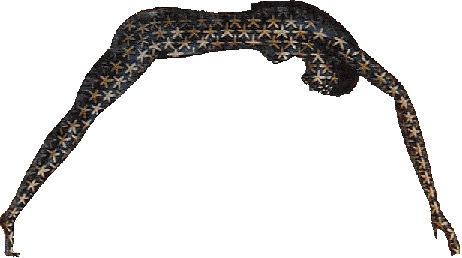 They are twins, they have children; Osiris, Nephthys, Isis and Set(h). Isis is
the wisest but Isis's son Horus is not evil and he battles
Set(h) who is evil.
They are twins, they have children; Osiris, Nephthys, Isis and Set(h). Isis is
the wisest but Isis's son Horus is not evil and he battles
Set(h) who is evil.
Like Adam and Eve, Isis and Osiris, are sister and brother.
They become husband and wife, and they have an evil brother who
is Set. This is represented in the works of Josephus to be Set(h).
Isis and Osiris have a 'good' son in Horus as Eve also has
a good son in Seth..This theory came from The Lost Books of
the Bible, Forgotten Books of Eden, Adam And Eve ...In it we find that
Adam and Eve then had two sets of twins making four offspring.
Then they add Seth, who is the fifth offspring according to this version. Seth
also has a twin sister. Her name is MAAT. Seth is the son of the pure Eve
but who is his Father? We'll tell you on the next page.
The first two sets of twins are Able and Aklemia and Cain and Luluwa. But these twins are not the children of Adam and Eve. This too is proven to be the correct version left out of the KJB.
The connection we find in the Nag Hammidi is that the authorities ( bad angles/Elohims ) are said to have defiled somebody and she gave birth to Abel. This doesn't make sense, since Abel is described as loved by God in the KJB, and his sacrifices are excepted. We have already mentioned that the biblical texts plainly state that Eve says, "With the help of the Lord, I had a son". Help of the Lord? Cain nor Abel are Adam's sons. This God is Enki. If the God mentioned here is Enki, we see why he loves Abel. But the true God did not want sacrifices - especially animals.
Here is the rest of the story from the Nag Hammidi library;
"They came to Adam. When they saw Eve talking to him, they said to one another,
What sort of thing is this luminous woman? For she resembles
that likeness which appeared to us in the light. (Sophia) Now
come, let us lay hold of her and cast their seed into her, so
that when she becomes soiled she may not be able to ascend into
her light. Rather, those whom she bears will be under our charge".
"Then Eve, being a force, laughed at their decision. She put
mist into their eyes and secretly left her likeness with Adam.
She entered the tree of knowledge and remained there. And they
pursued her, and she revealed to them that
she had gone into the tree and become a tree .
Then, entering a great state of fear, the blind creatures fled".
This explains why the Egyptians believed that the Gods could
turn themselves into animals, trees, or plants. An animal
represented the overall likeness of the god. From the Cobra to
the Baboon, similarities portrayed the attributes of the Gods.
The hawk was 'a creature' that looked down on man from the sky,
ect. It had a sharp eye and was wise not to be fooled by any
other creature.
"Afterwards, when they had recovered from the daze, they came to Adam; and seeing the likeness of this woman with him, they were greatly disturbed, thinking it was she that was the true Eve. And they acted rashly; they came up to her and seized her and cast their seed upon her. They did so wickedly, defiling not only in natural ways but also in foul ways, defiling first the seal of her voice - that had spoken with them, saying, "What is it that exists before you?" - intending to defile those who might say at the consummation (of the age) that they had been born of the true man through verbal expression. And they erred, not knowing that it was their own body that they had defiled: it was the likeness that the authorities and their angels defiled in every way".
The 'likeness' becomes known as Lillith.
"First she was pregnant with Abel, by the first ruler. And it was by the seven authorities and their angels that she bore the other offspring.. And all this came to pass according to the forethought of the prime parent, so that the first mother might bear within her every seed, being mixed and being fitted to the fate of the universe and its configurations, and to Justice. A prearranged plan came into effect regarding Eve, so that the modeled forms of the authorities might become enclosures of the light, whereupon it would condemn them through their modeled forms".
Now when Adam of Light ( The first Son of light ) conceived the wish to enter his light - i.e., the eighth heaven - he was unable to do so because of the poverty ( human body ) that had mingled with his light. Then he created for himself a vast eternal realm. And within that eternal realm he created six eternal realms and their adornments, six in number, that were seven times better than the heavens of chaos and their adornments. Now all these eternal realms and their adornments exist within the infinity that is between the eighth heaven and the chaos below it, being counted with the universe that belongs to poverty ( ie. earth/matter ). If you want to know the arrangement of these, you will find it written in the Seventh Universe of the Prophet Hieralias.
And before Adam of Light had withdrawn in the chaos, the authorities saw him and laughed at the prime parent because he had lied when he said, "It is I who am God. No one exists before me." When they came to him, they said, "Is this not the god who ruined our work?" He answered and said, "Yes. If you do not want him to be able to ruin our work, come let us create a man out of earth, according to the image of our body and according to the likeness of this being, to serve us; so that when he sees his likeness, he might become enamored of it.( ie. to love the flesh ) No longer will he ruin our work; rather, we shall make those who are born out of the light our servants for all the duration of this eternal realm." Now all of this came to pass according to the forethought of Pistis, in order that man should appear after his ( Adam of Light ) likeness, and should condemn them because of their modelled form. And their modelled form became an enclosure of the light. ..from Origin, in the Nag Hammidi
But as for Adam; "After the day of rest, Sophia sent her daughter Zoe, being called Eve, as an instructor, in order that she might make Adam, ( the man of the Earth ) who had no soul, arise, so that those whom he should engender might become containers of light".
"Then the authorities received the knowledge (gnosis) necessary to create man. Sophia Zoe - she who is with Sabaoth - had anticipated them. And she laughed at their decision. For they are blind: against their own interests they ignorantly created him. And they do not realize what they are about to do. The reason she anticipated them and made her own man first, was in order that he might instruct their modeled forms how to despise them, and thus to escape from them".
We now have three versions of the same story.
In the Egyptian legend, Nephthys is the sister of Set and she is also his wife. They have no children.
The KJB says the marriage of Cain and his wife produce one good son called Enoch,
however Enoch's books tell us there was a son of Seth named Enosh,
who had a son named Cainan ( different spelling ). We then have
the son of Cainan, called Mahaleleel and his son Jared, who is Enoch's Father.
We don't believe Cain is related to Enoch at all.
But we are about to reveal to you, that Seth is
the only one conceived of "Pure Light" and probably the
only son of the Pure Eve. By comparison, Isis has only ONE son.
We said, Cain has a wife named Luluwa. She is also his sister.
Able's wife was called Aklemia, but Abel is killed by Cain before
they have children. This means that Seth must have married Abel's
sister Aklemia after her husband is killed. We found this to be true
in the Lost Books of The Bible, Forgotten Books of Eden, Chapters of
Adam and Eve, page 65. Abel is killed by Cain at age 15.
Seth marries 'Aklia' at her age of 15. Throughout the following
marriages of Seth's son's Enos, his great grand father Cainan
and his grand father Mahalaleel there must be continual sets of
twins. We also found information that says Seth had a sister called Noraia.
In the Nag Hammidi we find A codex intitled;
The Thought of Norea
Is this Seth's sister?
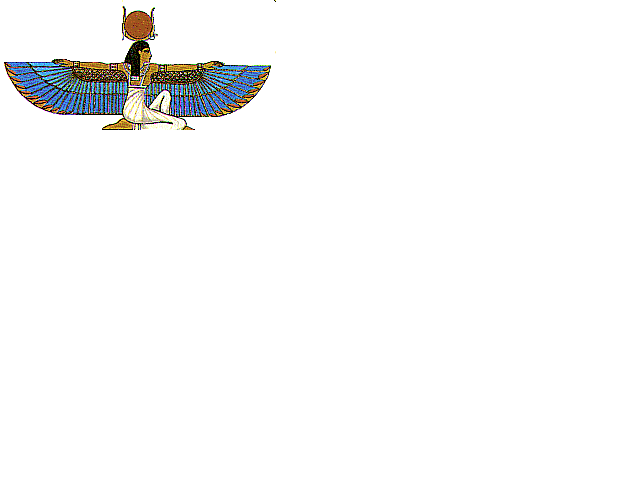 We also found this; "AND Joseph was the son of Jacob and
Elisheba, and Mary was the daughter of Eli (called Joachim) and
Anna, who were the children of David and Bathsheba, of Judah and
Shela, of Jacob and Leah, of Isaac and Rebecca, of Abraham and
Sarah, of Seth and
Maat,
of Adam and Eve, who were the children of God". from..
The Baptism of Iesu Maria The Christ
We also found this; "AND Joseph was the son of Jacob and
Elisheba, and Mary was the daughter of Eli (called Joachim) and
Anna, who were the children of David and Bathsheba, of Judah and
Shela, of Jacob and Leah, of Isaac and Rebecca, of Abraham and
Sarah, of Seth and
Maat,
of Adam and Eve, who were the children of God". from..
The Baptism of Iesu Maria The Christ
This proof completes the connection.
The ignorant one doesn't want us to know these things or the 'way' because he will loose control over us. The ancients of Babylon must have worshiped Baal (Enlil/Yaldabaoth) because they knew he created them, but YHWH through Sophia, is the reason we have a soul. By learning this we are set free from the power of Yaldabaoth. So being interested in the 'material life necessities ' created by Cain, we must have discarded our knowledge of the ignorant one and the creations the hosts made. But at the same time, we have discarded the knowledge of whence we came. We seem to be unaware of just how ignorant the prime parent really is. Mankind has lived under the spell of this ignorance for almost 10,000 years in this epoch. (Noah's epoch, 7640BC to 2005AD ) Soon it will come to an end again. By his mind, the soul of the perfected ( Master ) man will return to whence he came. John: chapter 11, verse 25 - " Jesus said unto her, 'I AM the Resurrection, and the Life: he that believeth in Me, though he were dead, yet shall he live.'"
More of the Egyptian Legend
According to the Heliopolitan Tradition, the world began as a watery chaos called Nun, from which the sun-god Atum (later to identified with Re) emerged on a mound. By his own power he engendered the twin deities Shu (air) and Tefnut (moisture), who in turn bore Geb (earth) and Nut (sky). Geb and Nut finally produced Osiris, Isis, Seth and Nephthys. The nine gods so created formed the divine ennead (i.e. company of nine) which in later texts was often regarded as a single divine entity.
This chaos possessed four characteristics identified with eight deities who were grouped in pairs: Nun and Naunet, (god and goddess of the primordial water), Heh and Hehet, (god and goddess of infinite space), Kek and Keket, (god and goddess of darkness), and Amun and Amunet, (god and goddess of invisibility).
These deities were not so much the gods of the earth at the time of creation as the personifications of the characteristic elements of chaos out of which earth emerged. They formed what is called the Hermopolitan Ogdoad (company of eight). Out of chaos so conceived arose the primeval mound at Hermopolis and on the mound was deposited an egg from which emerged the great sun-god. The sun-god then proceeded to organize the world. The Hermopolitan idea of chaos was of something more active than the chaos of the Heliopolitan system; but after the ultimate triumph of the latter system, a subtle modification (no doubt introduced largely for political reasons) made Nun the father and creator of Atum.
Through the use of magic and their connection to the gods, lay magicians provided a service to their community, usually consisting of counseling, magical arts, healing, and ceremony. Lay magicians who served within this last and final caste of the Egyptian priesthood belonged to a large temple known simply as "The House of Life". Laymen would come to "The House of Life" to meet with a magician, priest or priestess to have their dreams interpreted, to supply magical spells and charms, to be healed and to counteract malevolent magic, and to supply incantations of various types.
Though the House of Life provided it's laymen with many prescriptive cures for common ills, it was largely shrouded in mystery in ancient times. In fact, the library of 'The House of Life' was shrouded in great secrecy, as it contained many sacred rites, books, and secrets of the temple itself which were thought could harm the pharaoh, the priests, and all of Egypt itself.
At Thebes, however, the chief-priestess of Amun bore the title of ‘god’s wife’; she was the leader of the female music-makers who were regarded as the god’s harem and were identified with the goddess Hathor, who was associated with love and music. In the Twenty-third Dynasty and afterwards such priestesses were practically rulers of the theocracy, their duties centering around the reverence of Isis, and many other female and male goddesses and gods.
The Egyptian Kings were called "The Son's of God", who upon death became as one with his father, Osiris, or in the very early times, RA. Jesus used this phrase many times. It meant exactly the same thing then as it does now. The Egyptian Kings were allowed by devine right to be 'One with the Father'.
Because the Thebian High Priests had the same knowledge, the Mythological deities became a way of explaining to the people how all things were created and put into order. Each god had a role in the laws of nature, arts, science, medicine, geometery and literature and the despensing of Justice. Some of the God's evolved from the myths of Atlantis. Most were not Evil, but they controlled every aspect of life known to man in ancient times.... There were 42 Gods of Egypt.
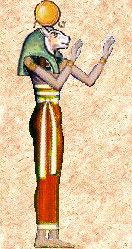 The evil Egyptian
goddess is Sekhmet,( not our lady on the Title page ) who is
like Lilith. The first offspring
become known as Gods but they are actually half god or angel, half human.
The evil Egyptian
goddess is Sekhmet,( not our lady on the Title page ) who is
like Lilith. The first offspring
become known as Gods but they are actually half god or angel, half human.
On the
Atlantis
page we find the Elohims or Nephilim have created for themselves,
slaves. These creatures are not human, but can be taught to do
work and obey their masters. The half human seed could have been
planted from the 'copies' of Adam created by the Nephilim - Enlil's followers.
They demand control of the rest of the creations including the real humans.
The authoritie's creations are called the 'Children of the Nephilim',
Umosejhe or 'Caretakers', and Grigori. These beings are also explained on
The Shepherd Kings
page.
There were 42 gods in original Egyptian mythology and if we count the God's ( or Angels, good and bad ) that belong to YHWH, we might find the same number. We place the 'Olai' (Hyksos) among the chosen few of the human factor which are the seed of the true Adam. We believe they originally went to India and Syria after they escaped from Atlantis. Most of them followed 'The All' or 'The Law of One' (YHWH). This early human population probably existed in 40,000 BC, as we discuss that proof on Passage, page 4. This population has been destroyed more than once. A few remain to begin anew but once again their descendents were corrupted into Baal worship such as King Apophis. Passage page 6, indicates that even after the third destruction, some of Noah's grandsons were responsible for this happening again. Abraham was a Hyksos himself, and he was corrupted.
The history of Egypt complied in the Turin Cannon indicates god-like
beings including Ptah and Horus, existed on earth...as it contains
a list of gods, demi-gods, spirits, mythical and human kings who
ruled Egypt from the beginning of time presumably until the composition
of this valuable document... This indicates a half human population
also existed in 40,000 BC. We believe some were evil, some were not.
This might explain why Egyptian Royality married their kin folks.
A long standing tradition to keep the bloodline pure.
see Egyptian Mythology
see the fifth paragraph on the old kingdom.
Our page on the Excerpts from the book of the dead, goes further in the explainations. The KA is the soul and there are evil as well as good gods in Egyptian myth. Excerpts
Among the gods who were known to the Egyptians in very early times were Amen and his
consort Ament, and their names are found in the Pyramid Texts, e.g., line 558, where they
are mentioned immediately after the pair of Gods Nau and Nen, and connection with the twin
Lion-gods Shu and Tefnut, who are described as the two gods who made their own bodies,
and with the goddess Temt, the female counterpart of Tem.
It is evident that even in the
remote period of the 5th Dynasty Amen and Ament were numbered among the primeval gods,
if not as gods in chief certainly as subsidiary forms of some of them, and from the fact
that they are mentioned immediately after the deities of primeval matter, Nua and Nen,
who we may consider to be equivalents of the watery abyss from which all things sprang,
and immediately before Temt and Shu and Tefnut, it would seem that the writers or
editors of the Pyramid Texts assigned great antiquity to their existence. Of the
attributes ascribed to Amen in the Ancient Empire nothing is known, but if we accept
the meaning 'hidden' which is usually given to his name, we might conclude that he
was the personification of the hidden and unknown creative power which was associated
with the primeval abyss gods in the creation of the world and all that is in it.
The word or root 'amen' certainly means "what is hidden", "what is not seen", "what cannot be seen," and the like, and this fact is proved by scores of examples which may be collected from texts of all periods. In Hymns to Amen we often read that he is hidden to his children", and "hidden to gods and men", and it has been stated that these expressions only refer to the "hiding," i.e., 'setting' of the sun each evening, and that they are only to be understood in a physical sense, and to mean nothing more than the dissappearance of the god Amen from the sight of men at the close of the day. Now, not only is the god himself said to be 'hidden', but his name also is 'hidden', and his form, or similitude, is said to be 'unknown;' these statements show that 'hidden' when applied to Amen, the great god, has reference to something more than the "sun which has disappeared below the horizon," and that it indicates the god who cannot be seen with mortal eyes, and who is invisible, as well as inscrutable, to gods as well as men.
In the times approaching the Ptolemaic period the name Amen appears to
have been connected with the root Men " to abide, to be permanent;" and
one of the attributes which were applied to him was that of eternal.
Amen Ra was the God of Thebes. Evidence supports an old theory to
the effect that the Heliopolitan form of the worship of the Sun-God was derived from Heliopolis in Syria.
E.W Wallis, "The Gods of the Egyptians"
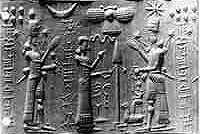 Osiris, AS-AR
Osiris, AS-ARThe heiroglyphic names represents a 'throne' and the other an 'eye'. Osiris is the symbol of the dead king, who is succeeded in the form of Horus, the living ruler. Isis is the consort of Osiris, and after his murder by Set, she reconstitutes his body and thus achieves for him eternal life; her ally in this role is Nepthys, the consort of Set. Horus, the son of Osiris and Isis, ultimately vanquishes Set, a symbol of anti structure or anti order. Set is related to the desert of Upper Egypt. As a deity of clouds, he opposed Atum, the sun. The Nag Hammidi also tells us that the consort of Yaldabaoth, Pronoia, ( Nepthys ) " becames enamored of him", and helps ( Eve/Sophia ) Isis . "She pored out her light upon the earth", making Osiris ( Adam/Horus ) immortal.
"Like other gods, Osiris was at times equated with Re. It is Osiris, others however say that his name is Ra, and that the god who dwelleth in Amentet is the phallus of Ra, wherewith he had union with himself". However, keep in mind that Osiris is the 'God of the Dead'. This indicates an invisible area beyond death. This indicates eternity is real and in eternity there is NO DEATH.
Although kingship appears as the pivot around which Egyptian mythology revolves, the key mythological themes are creation, procreation, revival, and the unity of the two lands. The temporal pharaoh was only a symbol of these orders. The power behind them is expressed in the sun, in the earth, and in animals, especially cattle. The language and symbols of power may at any time be translated from one into another--for example, the sun might be described in the symbolism of cattle or the earth in the symbolism of the sun. In the theology of the New Kingdom, the supreme god was Amon-Re, an identification of the Theban (and Hermopolitan) creator-god Amon with the sun-god Ra (successor to Atum).
 In the late dynastic period the
first syllable of the name was pronounced Aus or Us, and by punning it was made to have the
meaning of the word usr, "strength, might, power, and the like, and there is little doubt that the
Egyptians at that time supposedthe name of the god to mean something like the "strength of the eye", i.e.,
the strength of the Sun-god Ra. He is the Sun god because his 'calander'
is based on the Earth's movement around it.
In the late dynastic period the
first syllable of the name was pronounced Aus or Us, and by punning it was made to have the
meaning of the word usr, "strength, might, power, and the like, and there is little doubt that the
Egyptians at that time supposedthe name of the god to mean something like the "strength of the eye", i.e.,
the strength of the Sun-god Ra. He is the Sun god because his 'calander'
is based on the Earth's movement around it.
Another startling connection, Geb's words to the Nine Neteru:
"The son who was born --- Heru, on the Birthday of the Opener-of-the-ways..." This is
Horus and he is born on the resurrection day of Osiris, who is the 'Opener
of the WAYS'. This day is December 25th.
John; "And I said to the savior, "Lord, will all the souls then be brought safely into
the pure light? He answered and said to me, "Great things have arisen
in your mind, for it is difficult to explain them to others except to those who are from the
immovable race. Those on whom the Spirit of life will descend and (with whom) he will be with
the power, they will be saved and become perfect and be worthy of the greatness and be purified in
that place from all wickedness and the involvements in evil. Then they have no other care than
the incorruption alone, to which they direct their attention from here on, without anger or envy
or jealousy or desire and greed of anything. They are not affected by anything except the state
of being in the flesh alone, which they bear while looking expectantly for the time when they
will be met by the receivers ( of the soul ). Such then are worthy of the imperishable, eternal life
and the calling. For they endure everything and bear up under everything, that
they may finish the good fight and inherit eternal life." ..
from
the Apocryphon of John.
"Hence, if one has knowledge, he is from above. If he is called, he hears, he replies, and he turns toward him who called Him and he ascends to Him and he knows what he is called. Since he has knowledge, he does the will of Him who called him".
"By means of unity each one will understand itself. By means of knowledge it will purify itself of diversity with a view towards unity, devouring matter within itself like fire and darkness by light, death by life".
Other clues to the "Oneness" with YHWH we all seek
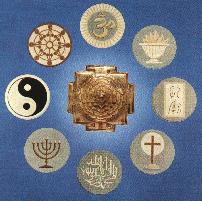 "For these things
that appear, delight us, but make the things that
appear not, hard to believe, or the things that appear
not, are hard to believe. The things most apparent are evil, but
the good is secret, or hid in, or to the things
that appear". "But as many as missed of the
proclamation, they received Speech, but not Mind,
being ignorant whereunto they were made, or by whom.
"For these things
that appear, delight us, but make the things that
appear not, hard to believe, or the things that appear
not, are hard to believe. The things most apparent are evil, but
the good is secret, or hid in, or to the things
that appear". "But as many as missed of the
proclamation, they received Speech, but not Mind,
being ignorant whereunto they were made, or by whom.
But their senses are just like to brute beasts, and
having their temper in anger and wrath,
they do not admire the things worthy of looking on.
Hermes, except thou first hate thy body,
O Son, thou canst not love thy self; but loving thy self,
thou shalt have the Mind, and having
the Mind, thou shalt also partake the Knowledge or Science"...
from..
The Twelfth Book of Hermes.(Greek).
We believe Thoth having been exiled came back to Egypt from Atlantis . Are all of these 'sons of light' the same person? Probably. Thoth and Hermes were known as Gods because of their great wisdom. Some say they were half human, half god. They are also known as 'assended Masters' like Osiris. They are 'teachers' of the 'All', 'teachers of secret things'...but they teach only to other 'Sons of God'. Those who strive to unite God's family.
In the Ancient Greek, he is Hermes. He could be
the Illumined Enochian Master we also know as 'Enoch'.
In the
secret Templar Tarot deck
he is called "The Hierophant". The one who is the scribe and called Thoth,( Egyptian ) could actually
be Enoch but from an earlier time period.
Genesis.** Seth is the "progenitor" of those early men of the Third Race in whom the "Planetary" angels had incarnated -- a Dhyan Chohan himself, who belonged to the informing gods; and Enos (Hanoch or Enoch) or Hermes, was said to be his son -- because it was a generic name for all the early Seers ("Enoichion"). Thence the worship.
"As 'Toth-Mus-Zurud,' I came within a vesica of Light, a merkabah of golden and blue-white fire, from Rigel, through the 'Asefetas' (the Belt of Orion), and descended unto 'Rastaru' (Rastau), the etheric manifold of the plain of Giza. With me, I brought the Enochian Table containing the blueprint for the building of the Temple of the Risen One, later to be called the Temple of the Lion, which is now known as the ‘Great Pyramid.' I was the Master Architect of this construction, which was begun in the year 10,400 B.C. It was completed in 10,348 B.C.
"It was not until 9,160 B.C. that I entered the genetic Earth born
embodiment through which I would reassume my ‘Thoth' role as Raismes of Aphra.
In this Earthborn form, I would dwell for 300 years. After that time,
I reincarnatated on Earth as Amenophis, architect to Akhenaten, Imenhotep, architect
to Zoser, and Hiram Abiff, architect to King Solomon,
among other experiences.
more info on Thoth
The Secrets of Thoth By Paul White
Hermes Trismegistus: Book 1 .. Corpus Hermeticum - John Everard 5. But he that shall learn and study the things that are, and how they are ordered and governed, and by whom and for what cause, or to what end, will acknowledge thanks to the Workman as to a good Father, an excellent Nurse and a faithful Steward, and he that gives thanks shall be Pious or Religious, and he that is Religious shall know both where the truth is, and what it is, and learning that, he will be yet more and more Religious. And let this, O Son, be the end of Religion and Piety; whereunto when thou art once arrived, thou shall both live well, and die blessedly, whilst thy Soul is not ignorant whether it must return and fly back again.
8. For this only, O Son, is the way to the Truth, which our Progenitors travelled in; and by which, making their Journey, they at length attained to the Good. It is a Venerable way, and plain, but hard and difficult for the Soul to go in that is in the Body.
9. For first must it war against its own self, and after much Strife and Dissention it must be overcome of one part; for the Contention is of one against two, whilst it flies away and they strive to hold and detain it.
The "Hermes" referred to is Hermes Trismesgistos "Hermes the Thrice Great", who was conflated with the Egyptian god Thoth. When the Greeks came to Egypt, they were incredibly impressed by the ancient wisdom of the Egyptian priests. So impressed, that they immediately plastered their gods' names all over the older Egyptian ones in the grand old syncretic Greek tradition. Hence Amon became Zeus-Amon and Thoth, god of letters and sciences, became Thoth-Hermes (since Hermes invented the Greek alphabet, don't you know).
Hermes Trismesgistos was a very powerful ancient image. He was not a god. No reputable medieval magus believed in polytheism -- most, like John Dee, were devout (if goofy ) Christians. In his writings, collectively called the Corpus Hermeticorum, Hermes describes himself as "Philosopher, Priest, and King". Hence, he was human. An incredibly powerful sorceror, to be sure, but not a god. His exploits included building the Pyramids, designing the Hanging Gardens of Babylon, teaching Pythagoras, and generally doing everything worth doing in antiquity. He also invented the Egyptian alphabet and while doing that and building the odd pyramid, became the inspiration for the legends of Thoth. After his death (or occultation) he was worshipped as a god, much as Alexander the Great was.
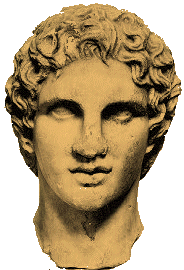 Speaking of Alexander the Great, some say it was he who discovered the Emerald Tablet
(on which was written the whole knowledge of magic in about two paragraphs --
apparently it wasn't what he said, it was how he said it)
clenched in the mummified hands of Hermes Trismesgistos him self.
Other legends say he discovered it in the hands of the ancient magician Apollonius of
Tyana, but since Apollonius as born four hundred
years after Alexander died, most scholars doubt this theory. Still other legends say
the Tablet was discovered by Sarah, wife of Abraham, which
would make Hermes dead before he built
the Hanging Gardens. Anyway, the knowledge on the Tablet and in Hermes T's other writings
(17 or so known books plus commentary) was what was called "Hermetic Science".
Speaking of Alexander the Great, some say it was he who discovered the Emerald Tablet
(on which was written the whole knowledge of magic in about two paragraphs --
apparently it wasn't what he said, it was how he said it)
clenched in the mummified hands of Hermes Trismesgistos him self.
Other legends say he discovered it in the hands of the ancient magician Apollonius of
Tyana, but since Apollonius as born four hundred
years after Alexander died, most scholars doubt this theory. Still other legends say
the Tablet was discovered by Sarah, wife of Abraham, which
would make Hermes dead before he built
the Hanging Gardens. Anyway, the knowledge on the Tablet and in Hermes T's other writings
(17 or so known books plus commentary) was what was called "Hermetic Science".
The Arab alchemistic writings began to filter into Europe following the Papacy of Sylvester II (999-1003) and were eventually disseminated such that the legend of Hermes Trismesgistos achieved a certain degree of recognition. The actual Corpus did not become available to the West until 1460, when the documents salvaged from Constantinople surfaced in Florence. Their translation in 1471, by Marsilio Ficino, set off the great explosion of Renaissance magic personified by Dee, Trithemius, Agrippa, and Paracelsus.
Thoth and Enoch, the first Mason's
"In ancient Egypt, the engineers, draftsmen, and masons
who worked on the big architectural projects were accorded a
special status. They were organized into elite guilds..."
"Evidence of the existence of these special guilds was uncovered
by archaeologist Petrie during his expeditions to the Libyan
desert in 1888 and 1889. In the ruins of a city built around 300
BC, Dr. Petrie's expedition uncovered a number of papyrus
records. One set described a guild that held secret meetings
around the year 2000 BC. The guild met to discuss working hours,
wages, and rules for daily labor. It convened in a chapel and
provided relief to widows, orphans, and workers in distress. The
organizational duties described in the papyri are very similar
to those of 'Warden' and 'Master' in a modern branch of...
Freemasonry.
- William Bramley, The Gods of Eden
"I am the great God in the divine boat...I am a simple
priest in the underworld anointing in Abydos, elevating to higher
degrees of initiation...I am Grand Master of the craftsmen who
set up the sacred arch for a support."
- Thoth to Osiris, The Egyptian Book of the Dead
"According to a very old Masonic tradition, the Egyptian
god Thoth "had played a major part in preserving knowledge of
the mason craft and transmitting it to mankind after the flood...
."
- David Stevenson, The Origins of Freemasonry
"...The author of a well researched academic study [The Origins of Freemasonry]...went so far as to say that, in their early days, the Masons had regarded Thoth as their patron."
"...The Book of Enoch has always been of great
significance to Freemasons, and...certain rituals dating back
to long before Bruce's time [1730-1794] identified Enoch himself
with Thoth, the Egyptian god of wisdom." In the Royal Masonic
Cyclopaedia is an entry 'that Enoch was the inventor of writing',
'that he taught men the art of building', and that, before the
flood, he 'feared that the real secrets would be lost - to
prevent which he concealed the grand Secret, engraven on a white
oriental porphyry stone, in the bowels of the earth'."
- Graham Hancock, The Sign and the Seal
We can equate many similarities to Thoth and
Enoch such as both of them being called 'architects' and
writing down what God tells them.
In the Emerald Tablets Thoth says
HE built the Great Pyramid. Enoch, in esoteric wisdom,
is also given credit for the building of the Great Pyramid.
We know this because Enoch was in Egypt and we know the
Egyptians changed people's names. It is possible
that the Egyptians gave him another name of 'Imenhotep', or Imhotep,
This is the description of Imhotep of Legend.
from..
Great Builders
We told you on the 'Widow's Son page' that Joseph was
called Zaphenath-paneah". The name the Bible states that was
given to Joseph by the pharaoh, is "Zaphenath-paneah", and has
been translated by some to mean, "the God lives; the God speaks".
There are several works of "wise sayings" attributed to one
"Ptahotep", who is only known as a vizier of a king from the 5th
dynasty. However, there are 5 known "Ptahoteps", all viziers to
pharaohs of the 5th dynasty, all priests of Heliopolis, or "On".
Now, let's do some assuming for a moment -- let's assume
that Joseph wrote a collection of wise sayings, of course,
inspired by God. Because of his great favor with the king, these
came to be revered by the scribes and people. His fame as a
sage spread throughout Egypt and became the standard of wisdom.
We know that his wisdom came from the true God of Abraham.
Would it not be expected that Joseph would pass on his wisdom
from God to those around him? In fact, the Bible says that
he did:
"He sent a man before them, even Joseph, who was sold for a servant... The king sent and loosed him; even the ruler of the people, and let him go free. He made him lord of his house, and ruler of all his substance to... teach his senators wisdom." PSA 105:17-21
After Joseph's death, others copied his wise sayings and took credit for them, perhaps adding a bit of their own and changing things to suit them. As these sayings were passed down through several generations, instead of being attributed to Imhotep, they were attributed to Ptahotep, "the voice of" the Egyptian creator, "Ptah". Thousands of years later, several papyruses are found which purport to be copies of "The Instruction of Ptahotep". Could this scenario have happened?
There are two particular statements in Ptahotep's writings which indicate that this is exactly what happened. At the end of these manuscripts, the writer states that he is near death, having lived 110 years and that he received honors from the king exceeding those of the ancestors -- in other words, he received the most honors ever given a man by a pharaoh. And, we know that Joseph died at the age of 110 years. Well, it gets even more familiar as we examine the text of these manuscripts.
They begin as Solomon's Proverbs begin, as instructions to his son, with the admonition they are "profitable to him who will hear" but "woe to him who would neglect them". Keep in mind that the Originator of Joseph's wisdom was also the Originator of Solomon's wisdom, and the parallels between the two are undeniable. We are told in the Bible that Solomon knew many, many proverbs:
And Solomon's wisdom excelled the wisdom of all the children of the east country, and all the wisdom of Egypt. For he was wiser. .. and his fame was in all nations round about. And he spake three thousand proverbs: and his songs were a thousand and five." 1KI 4:30-32
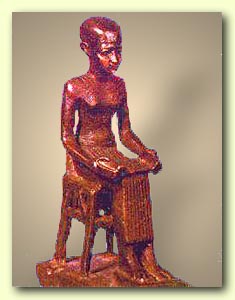 Imhotep,
(2635-2595 B.C.) Imhotep existed as a mythological figure in the minds of most
scholars until the end of the nineteenth century when he was
established as a real historical personage. Revered as a god,
a patron of scribes, a sage, and leader, Imhotep is often
considered the first true architect.
Imhotep,
(2635-2595 B.C.) Imhotep existed as a mythological figure in the minds of most
scholars until the end of the nineteenth century when he was
established as a real historical personage. Revered as a god,
a patron of scribes, a sage, and leader, Imhotep is often
considered the first true architect.
Although Imhotep has been credited with innumerable architectural achievements, the only certainty is that he built the complex of King Neterikhet at Saqqara. His name inscribed on the north side of the enclosure wall of Sekhemkhet's unfinished pyramid suggest that he was also responsible for this later project.
Imhotep is considered to be the earliest known named architect.
Adolf K Placzek. Macmillan Encyclopedia of Architects. Vol. 2.
London: The Free Press, 1982. ISBN 0-02-925000-5. NA40.M25. p454-464.
Enoch was actually Sumerian not Egyptian, not Hebrew. These 'sons' go back in time to over 10,000 years ago, but the title was used for many years afterward which may explain the writing on the pyramid. More on Imhotep
He was the world's first named architect who built Egypt's
first pyramid, is often recognized as the world's first doctor,
a priest, scribe, sage, poet, astrologer, and a vizier and chief
minister, though this role is unclear, to Djoser (reigned 2630–2611 BC),
the second king of Egypt's third dynasty. He may have lived
under as many as four kings. An inscription on one of that
kings statues gives us Imhotep's titles as the "chancellor
of the king of lower Egypt", the "first one under the king",
the "administrator of the great mansion", the "hereditary Noble",
the "high priest of Heliopolis", the "chief sculptor", and finally
the "chief carpenter".
from
Imhotep, Doctor, Architect, High Priest, Scribe
THE TEACHINGS OF AMENEMOPE
In due time there grew up in Egypt a teacher called by many the "son of man" and by others Amenemope. This seer exalted conscience to its highest pinnacle of arbitrament between right and wrong, taught punishment for sin, and proclaimed salvation through calling upon the solar deity.
Amenemope taught that riches and fortune were the gift of God, and this concept thoroughly colored the later appearing Hebrew philosophy. This noble teacher believed that God-consciousness was the determining factor in all conduct; that every moment should be lived in the realization of the presence of, and responsibility to, God. The teachings of this sage were subsequently translated into Hebrew and became the sacred book of that people long before the Old Testament was reduced to writing. The chief preachment of this good man had to do with instructing his son in uprightness and honesty in governmental positions of trust, and these noble sentiments of long ago would do honor to any modern statesman.
This wise man of the Nile taught that "riches take themselves wings and fly away" -- that all things earthly are evanescent. His great prayer was to be "saved from fear." He exhorted all to turn away from "the words of men" to "the acts of God." In substance he taught: Man proposes but God disposes. His teachings, translated into Hebrew, determined the philosophy of the Old Testament Book of Proverbs. Translated into Greek, they gave color to all subsequent Hellenic religious philosophy. The later Alexandrian philosopher, Philo, possessed a copy of the Book of Wisdom.
Amenemope functioned to conserve the ethics of evolution and the morals of revelation and in his writings passed them on both to the Hebrews and to the Greeks. He was not the greatest of the religious teachers of this age, but he was the most influential in that he colored the subsequent thought of two vital links in the growth of Occidental civilization -- the Hebrews, among whom evolved the acme of Occidental religious faith, and the Greeks, who developed pure philosophic thought to its greatest European heights.
In the Book of Hebrew Proverbs, chapters fifteen, seventeen, twenty, and chapter twenty-two, verse seventeen, to chapter twenty-four, verse twenty-two, are taken almost verbatim from Amenemope's Book of Wisdom. The first psalm of the Hebrew Book of Psalms was written by Amenemope and is the heart of the teachings of Ikhnaton. (Akenhaten) see The Urantia Papers
Although this history limits him to the 3rd dynasty in Egypt,
we believe it goes much further back in time. If Imhotep is considered
the first architect and doctor, he may be otherwise known as
Enoch or Thoth but in a reincarnated sence. Although we
have no supporting evidence of this, the connection seems very
real. Someone taught them these skills and these skills, in
a very advanced state seem to be unknown until their time.
This seems to indicate that the skills were brought from
outside the country into Egypt and the Atlantis legends
point to very advanced mathmetical and scientific skills.
Since we know Enoch, Noah, Seth and Adam had these skills we cannot
side step the theory that Imhotep is actually the person of Enoch.
He may be the reincarnation of Thoth. Enoch is 'taken to heaven'
where he learns all of God's sciences. But there is more to this
that is not explained in the KJB. One must first be 'educated'
in the mysteries before this can take place.
He has read the Emerald Tablet, learns the 'mysteries' which takes many years,
becomes known as an architect and practices these skills again in
Egypt just in a later time period.
The difference we see is that Thoth and Hermes are portrayed as gods,
Enoch and Imhotep are not.
Enoch and Imhotep are mortal but having great wisdom and power.
If the Gods were first, we then have the possibility of
the reincarnation of Thoth, not once but three times.
His existance was before Enoch in 38,000 BC.
And that because Enoch is called a Hebrew and Imhotep is Egyptian, they are
one and the same person spiritually. But we believe Enoch's
actual time on earth is slightly before 10,500 BC. We have six generations
between Adam and Enoch and we have the time table in which Graham Hancock,
Robert Buval, Anthony West and Edgar Cayce say the pyramid is built. (10,390 BC )to
put validity on this theory. Keeping in mind the length of time
each of the generations lived, we can easily arrive at the date of
Enoch's time on earth. If the 'Gods' were first and Thoth
is a god, this matches up pretty close..
The Hebrews ( Hyksos ) did not
believe in reincarnation, but the KJB does have numberous
references to the afterlife. The Egyptian Book of The Dead is filled with
stories about the Afterlife.
As one who attained immortality,
the secret of how we "might become as gods", Thoth/Enoch promises to
return at the end of time "with the keys to the gates of the
sacred land." .
more info on Enoch/Thoth
The Secrets of Thoth By Paul White
There are 144,000,000 ascended Masters.
Recently, the History Channel took the bold step of declaring the Atlantians built the Pyramid in 10,390 BC. The show entitled Pyramids, Majesty and Mystery, aired on Dec 20th, 2001. This aligns with our research and the research of Graham Hancock, Anthony West, Robert Bauval and Adrin Gilbert, who can show you how they arrived at this conclusion in their books, The Message of the Sphinx, and Fingerprints of the Gods and The Orion Mystery and this coinsides with the readings of Edgar Cayce.
Fact: Michael Lehner, renowned American Egyptologist,
had his education paid for by the Now Foundation,
a wholly owned subsidiary ran by the Edgar Cayce Foundation. The Now
Foundation set out to prove Cayce's readings were in fact true
in 1941. We are now seeing evidence they are.
However Egyptian Authorities demand loyality to their beliefs which
are controled by a Muslim faction. Any deviation from this
spells removal from research geared to find the truth that Cayce uncovered.
We are awaiting the announcement of the discovery of the Secret
Chamber ( Hall of Records ) under
the paw of the Sphinx
and the proof of the rest of the theories. We believe the Authorities have
already discovered the Hall and are hiding their findings.
Please go to.. Passage, page 3 Mythology vs Biblical history Immediately following Passage 3 is a page you won't want to miss. We can prove there's life after death.. see "Light" What should Hiram's death mean to you?
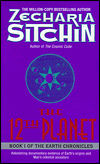 |
 |
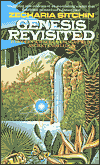 |
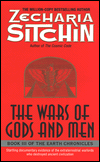 |

|
 |
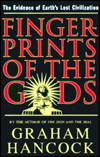 |
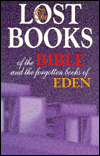 |
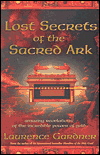 |
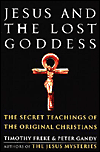 |
Sign our guest book
View My Guestbook
 Sign My Guestbook
Sign My GuestbookIf your site is not Strictly Masonic in nature, We kindly ask that you do not link to this site without permission of the Web Master or under the guidelines set forth here ...see Legal Issues
NO PART OF THIS SITE MAY BE COPIED OR REPRODUCED, IN WHOLE OR IN PART, WITHOUT THE EXPRESS WRITTEN PERMISSION OF THE WEBMASTER... © COPYRIGHT 1999 - 2009 c.i.c. ALL RIGHTS RESERVED.
This page has been visited times Since November 31st, 1999